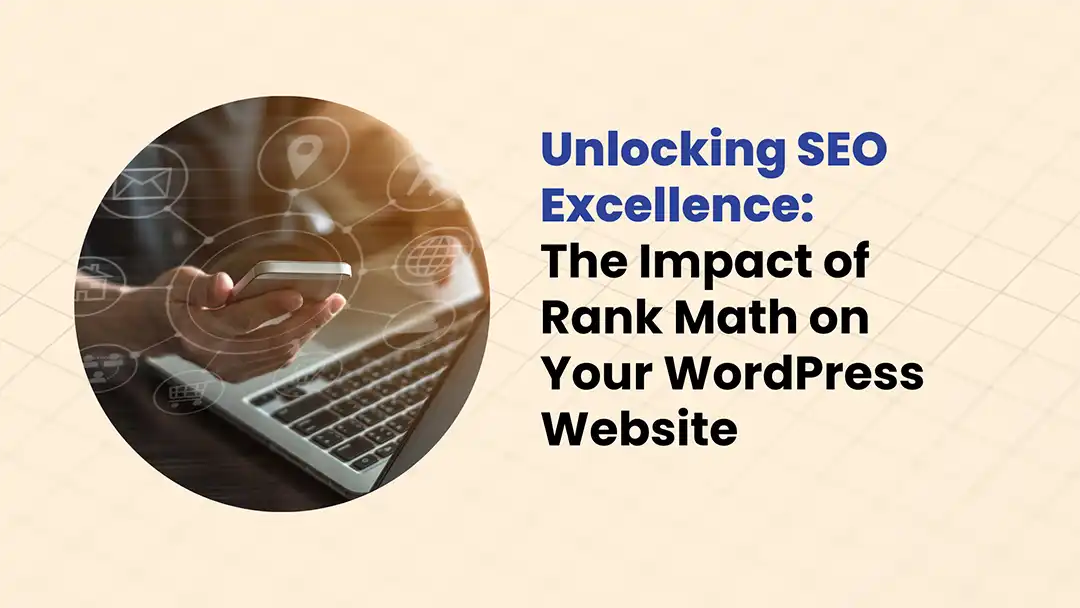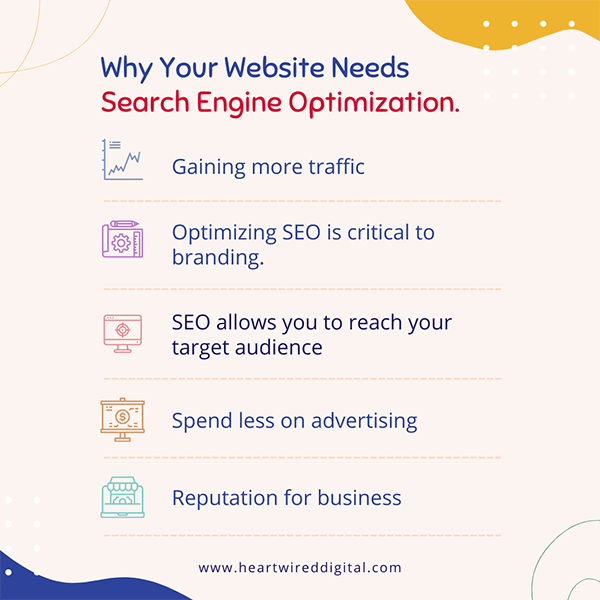
Unlocking SEO Excellence: The Impact of Rank Math on Your WordPress Website





Search engine optimization, or SEO, is an essential part of any modern business’s online strategy. SEO refers to the process of improving the visibility and ranking of a website on search engines like Google, which can help bring more traffic to your site and ultimately lead to more customers and sales.
The importance of SEO for a business website cannot be overstated. In today’s digital age, having a strong online presence is crucial for the success of any business. By optimizing your website for search engines, you can increase its visibility, attract more traffic, and ultimately boost your sales and profits.
To understand why SEO is so important, let’s first take a look at how people use the internet to find information and products. When someone is looking for something, they typically turn to a search engine like Google. The search engine uses algorithms to scour the web for relevant content and presents the user with a list of results, known as the “search engine results page” or SERP.
The higher your website ranks on the SERP, the more likely it is that people will visit your site. This is where SEO comes in. By implementing various optimization techniques, you can improve your website’s ranking on the SERP and increase its visibility.
But why is it important for your website to be visible? For one, the higher your website ranks on the SERP, the more credible and trustworthy it appears to potential customers. When people see your website at the top of the search results, they are more likely to click on it and visit your site. This increased traffic can translate into more sales and revenue for your business.
In addition to increasing your visibility and credibility, SEO can also help to improve the user experience on your website. When you optimize your site for search engines, you are essentially making it easier for people to find the information they are looking for. This can include things like ensuring that your website is mobile-friendly and loading quickly, using clear and concise headings and subheadings, and providing useful and relevant content.
Furthermore, SEO can also help to drive targeted traffic to your website. When you optimize your site for specific keywords, you are more likely to attract visitors who are actively searching for the products or services you offer. This means that the traffic you receive is more likely to convert into sales, rather than just casual visitors who may not be interested in what you have to offer.
Overall, SEO is an essential component of any successful business website. By implementing various optimization techniques, you can improve your website’s visibility, credibility, user experience, and the quality of the traffic it receives. This can ultimately lead to more sales and revenue for your business.
If you are not already implementing SEO on your business website, now is the time to start. You can begin by conducting keyword research to identify the terms and phrases that are most relevant to your business and the products or services you offer. You can then incorporate these keywords into your website’s content, headings, and meta tags to improve its ranking on the SERP.
In conclusion, SEO is an essential part of any modern business’s online strategy. It can help increase the visibility, user experience, trust, and targeted traffic to your website, which can ultimately lead to more customers and sales. So if you’re not already using SEO for your business, it’s time to start!
Google warned us, yet few paid attention or even knew what they were talking about, what even is a favicon?
Recently, as Google does periodically, they rolled out some changes to the way we search, or at least the way they want us to. As they explained, especially when it comes to mobile search, they want websites to be easily identified and scannable. One way of implementing this was to utilize the ever so common favicon.
For starters, a favicon is a small image icon that represents a website or at least should. Granted there are plenty of websites that are out there that are unidentifiable in this manner and are missing said icon. If you or your web designer failed to add a favicon to your site, perhaps with Google’s prompting now is the time.
What should a favicon be exactly you ask. Well generally speaking it should be something that is a representation of either your logo or theme. This enables users to quickly recognize your site over others when either searching or in their bookmarks.
Depending on your web application or theme, it may suggest a specific size recommendation to upload. Usually, a minimum would be 16×16 pixels to 48×48. It can also be a good practice to use various sizes so that they format and scale appropriately on different devices. That being said, best practice is to not necessarily use a 16×16 size as Google will rescale it to that size anyway.
You can use a JPG, GIF, or PNG for most browsers without any issue. However, best practices would be to use the ICO file format to ensure all browser compatibility.
An ICO is an image file that is formatted specifically for computer icons in Microsoft Windows. ICO files can contain one or more images of different sizes, depths, and colors for appropriate scaling on various browsers and device sizes.
There are numerous ICO converters online that can create ICO favicon files for you for free. Many of these converters require you to set the parameters of the file sizes that you want, otherwise, they default to 256 pixels which is the maximum size. It is best practice as mentioned previously to incorporate a few variations of image sizes in the favicon file for your website.
According to Google the favicons and the homepage in which they reside must be crawlable. Favicons should be a representation of your brand and easily identifiable. Also, make sure that the icon is not offensive in any way or Google will set it back to a default image icon. Google has already begun penalizing sites without appropriate favicons that go against their guidelines.
If you do not currently have a favicon on your site, we might suggest that you either create one yourself, contact your designer, or of course we are happy to help as well. Google is constantly making changes to the SEO algorithms, especially when it comes to mobile searches. The next step beyond mobile search will be voice search, which we will address in an upcoming post.
Did you enjoy this content? We would love it if you could share it with your friends, and let us know your thoughts. Be sure to subscribe so you don’t miss out on any future content we provide.

Business owners spend a great deal of time and money trying to “gain traction” or get “traffic” to their websites only to see little results.
There are a few things either you or your web designer can do that can help get you noticed.
We could keep going but you would likely get overwhelmed and want to stop reading. If you would like to learn more on how you can generate traffic to your business or even better yet have us help you accomplish your goals contact us and schedule your discovery session today.